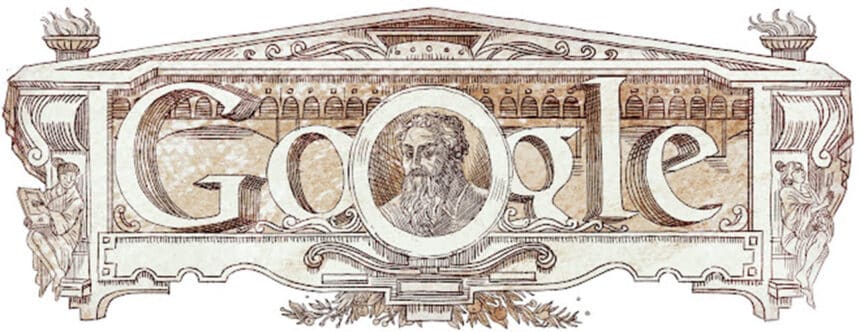Image Courtesy: Google Doodle
Giorgio Vasari (30 July 1511 – 27 June 1574) was an Italian Renaissance painter and architect, who is best known for his work The Lives of the Most Excellent Painters, Sculptors, and Architects, considered the ideological foundation of all art-historical writing.
Life and Career
He was born on July 30, 1511, in Arezzo, Italy. Vasari displayed an early interest in the arts and received training as a painter and apprentice in Florence. His exposure to the artistic achievements of the Renaissance greatly influenced his later career.
Vasari is best known for his contributions to art history and his own artistic works. He painted numerous religious and mythological scenes, including frescoes in the Palazzo Vecchio in Florence and the Vasari Corridor, a famous elevated passageway connecting the Palazzo Vecchio and the Palazzo Pitti.
However, Vasari’s most lasting contribution to the art world is his work as an art historian. He wrote “Le Vite delle più eccellenti pittori, scultori, ed architettori” (The Lives of the Most Excellent Painters, Sculptors, and Architects), commonly known as “Vasari’s Lives.” This groundbreaking work, published in 1550 and expanded in later editions, remains one of the earliest and most influential art historical texts, providing biographical accounts of many Renaissance artists and insights into their techniques and contributions.
Giorgio Vasari passed away on June 27, 1574, in Florence, Italy. His impact on art and art history has endured well beyond his lifetime.
Award and Legacy
Giorgio Vasari’s legacy is multifaceted:
- “Vasari’s Lives”: His comprehensive and pioneering work in “Vasari’s Lives” laid the foundation for modern art history. His biographical approach and analysis of the artistic contributions of his contemporaries and predecessors set a precedent for documenting and analyzing artists’ lives and works.
- Architectural Contributions: Vasari made important contributions to architecture, particularly in Florence. His designs and renovations, such as those for the Uffizi Gallery and the Vasari Corridor, demonstrate his architectural skill and understanding of spatial relationships.
- Artistic Practice: Vasari’s own paintings, while not as well-known as his writings, reflect the influence of his contemporaries and the Renaissance ideals of beauty, harmony, and humanism.
- Artistic Community: Through his writings and connections, Vasari played a significant role in fostering the development of the artistic community during the Renaissance. He encouraged artists to learn from one another and from the great works of the past.
- Artistic Canon: Vasari’s work contributed to the establishment of a canon of “great artists” and helped shape how we perceive the achievements of Renaissance art.
- Art Criticism: Vasari’s writings included art criticism, reflecting his opinions on various artists’ strengths and weaknesses. His critical assessments have influenced subsequent discussions about artistic merit.
Giorgio Vasari’s influence is pervasive in the art world, from his own artistic output to his foundational role in art historiography. His work continues to shape how we understand and appreciate art, particularly from the Renaissance period.
On 30 July 2011, Google celebrated Giorgio Vasari’s 500th Birthday with a doodle.

